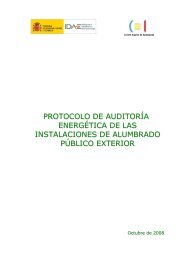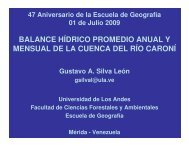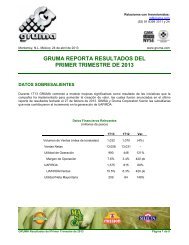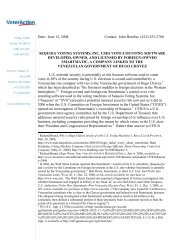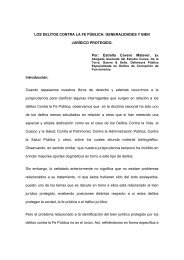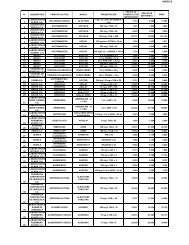broschuere ee zahlen en bf
broschuere ee zahlen en bf
broschuere ee zahlen en bf
Create successful ePaper yourself
Turn your PDF publications into a flip-book with our unique Google optimized e-Paper software.
annex: methodological notes<br />
102 R<strong>en</strong>ewable Energy Sources in Figures<br />
Direct and indirect land use changes – which play a major role in cultivated biomass – are<br />
not tak<strong>en</strong> into account in the calculations for 2010. Since land use changes may cause high<br />
emissions of gr<strong>ee</strong>nhouse gases and are therefore of considerable relevance, they ought to be<br />
included in the accounts. Methodological approaches for indirect land use changes are curr<strong>en</strong>tly<br />
being developed, by the European Commission among others. Since January 2011,<br />
direct land use changes have largely b<strong>ee</strong>n ruled out by the provisions of the Biofuels Sustainability<br />
Ordinance.<br />
Gr<strong>ee</strong>nhouse gas emission factors used 1)<br />
Fuel<br />
Emission factor<br />
(underlying raw material)<br />
[g CO eq./kWh]<br />
2<br />
Petrol/diesel (fossil) 301.7<br />
Biodiesel (rapes<strong>ee</strong>d) 165.6<br />
Biodiesel (soya) 180.0<br />
Biodiesel (palm oil) 115.2<br />
Biodiesel (waste) 57.6<br />
Vegetable oil (rapes<strong>ee</strong>d) 126.0<br />
Bioethanol (grain) 172.6<br />
Bioethanol (b<strong>ee</strong>ts) 118.8<br />
Bioethanol (sugar cane) 86.4<br />
Biodiesel (weighted) 164<br />
Vegetable oil (weighted) 126<br />
Bioethanol (weighted) 155<br />
1) Based on iPcc 2007<br />
6. Fossil fuel savings due to r<strong>en</strong>ewable <strong>en</strong>ergy sources<br />
sources: UBa [75] on the basis of ag<strong>ee</strong>-stat and eP/eR [85];<br />
BR [79], [80]; iFeU [5]<br />
The calculation of the fossil <strong>en</strong>ergy savings achieved by using r<strong>en</strong>ewable <strong>en</strong>ergy sources in<br />
the electricity, heat and transport sectors is closely based on the methods and data sources of<br />
the emission balances (s<strong>ee</strong> also Annex, Section 3-5). Dep<strong>en</strong>ding on the substitution ratio, the<br />
various r<strong>en</strong>ewable <strong>en</strong>ergy supply paths save differ<strong>en</strong>t fossil fuels including the n<strong>ee</strong>d for their<br />
upstream chains.<br />
The saving of fossil fuels in the electricity sector is<br />
calculated from the r<strong>en</strong>ewable <strong>en</strong>ergy substitution factors<br />
determined by Klobasa et al. [88] (cf. Annex, Section<br />
3), the average fuel effici<strong>en</strong>cies of German power<br />
plants, and the cumulative primary <strong>en</strong>ergy n<strong>ee</strong>ded to<br />
make the fossil fuels available.<br />
Average fuel-use<br />
effici<strong>en</strong>cy of the pertin<strong>en</strong>t<br />
power-station sector<br />
Energy<br />
[%]<br />
sources<br />
lignite 38.3<br />
hard coal 42.1<br />
natural gas 51.1<br />
mineral oil 44.7<br />
sources: ageB [2], [4]




